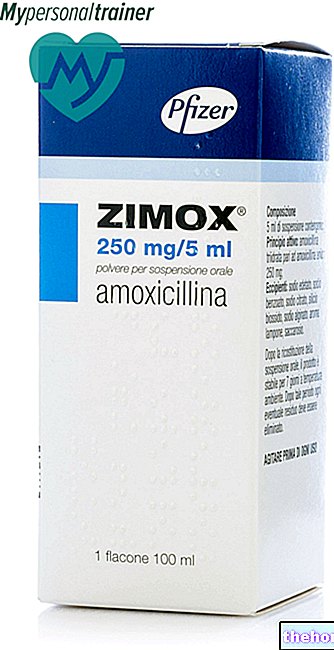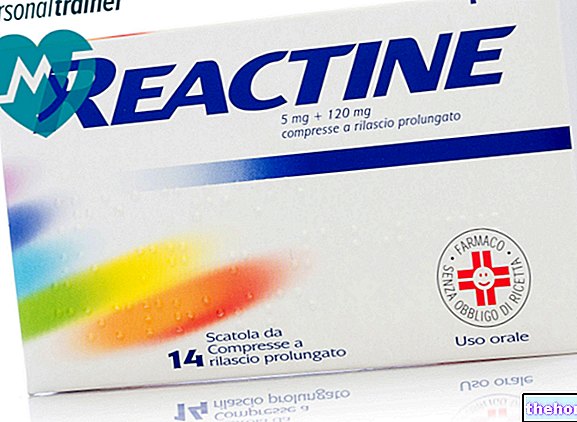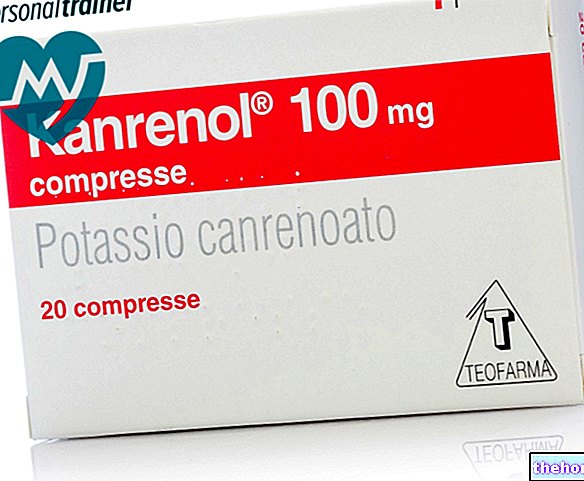Active ingredients: Iodopovidone
BETADINE 10% cutaneous solution
Betadine package inserts are available for pack sizes:- BETADINE 10% cutaneous solution
- BETADINE 10% Gel
- BETADINE 10% Impregnated gauze
- BETADINE 1% Mouthwash
- BETADINE 10% vaginal solution
- BETADINE 5% Cream
- BETADINE 0.2 g VAGINAL TABLETS
- BETADINE 10% VAGINAL GEL
- BETADINE 10% Cutaneous solution
- BETADINE 5% Cutaneous spray solution
Why is Betadine used? What is it for?
WHAT IS IT
Betadine 10% cutaneous solution is a broad spectrum antiseptic for external use.
WHY IT IS USED
Betadine 10% cutaneous solution is used for the disinfection and cleaning of damaged skin (wounds, sores, etc.).
Contraindications When Betadine should not be used
Hypersensitivity to components or other closely related substances from a chemical point of view. Children under the age of 6 months.
Precautions for use What you need to know before taking Betadine
In pediatric age use only in case of real need and under medical supervision.
In case of use for prolonged periods on large body surfaces, on mucous membranes or under occlusive dressing (bandage made with waterproof material), particularly in children and patients with thyroid disorders, perform thyroid function tests. Discontinue treatment at least 10 days before performing a marked iodine scintigraphy (thyroid function test).
The accidental ingestion or inhalation of some disinfectants can have serious, sometimes fatal, consequences.
Avoid contact with eyes.
Interactions Which drugs or foods can modify the effect of Betadine
Avoid the simultaneous use of other antiseptics and detergents. Do not use at the same time on the treated part products containing mercury salts or compounds of benzoin.
Incompatibility with mercury salts, carbonates, tannic acid, alkalis, hydrogen peroxide may occur.
If you are using other medicines ask your doctor or pharmacist for advice.
Warnings It is important to know that:
WHAT TO DO DURING PREGNANCY AND BREASTFEEDING
Use only in case of real need and only after consulting your doctor.
KEEP THE MEDICINAL PRODUCT OUT OF THE REACH AND SIGHT OF CHILDREN
Dose, Method and Time of Administration How to use Betadine: Posology
Warning: do not exceed the indicated doses without medical advice.
Apply twice a day directly to small wounds and skin infections. The part can be covered with gauze and adhesive bandages. A quantity of 5 ml of solution (containing 50 mg of iodine) is sufficient to treat an "area of about 15 cm per side. The brown solution, applied to the skin, creates a protective surface film that does not stain.
Warning: use only for short periods of treatment; in the absence of appreciable results, it is advisable to consult a doctor.
Overdose What to do if you have taken too much Betadine
Since this is a local use on skin and wounds, the possibility of excessive use of the product is unlikely.
However, if higher than recommended doses are used, the general effects of iodine may occur: decreased or increased thyroid function. Establish symptom treatment or supportive care.
In case of using an excessive dose of Betadine® 10% cutaneous solution, notify your doctor immediately or go to the nearest hospital.
Side Effects What are the side effects of Betadine
In some cases burning or irritation.
The use, especially if prolonged, can give rise to sensitization phenomena. In this case, interrupt the treatment and adopt suitable therapeutic measures.
The reaction of iodine with injured tissues can delay healing.
Compliance with the instructions contained in the package leaflet reduces the risk of undesirable effects.
These side effects are usually transient. However, when they occur, it is advisable to consult your doctor or pharmacist.
It is important to inform your doctor or pharmacist of any undesirable effects not described in the package leaflet.
Request and fill in the undesirable effects report form available at the pharmacy (Form B).
Expiry and Retention
Warning: do not use the medicine after the expiry date indicated on the package.
Keep away from heat, tightly closed.
It is important to always have the information about the medicine available: therefore keep the bottle.
Composition and pharmaceutical form
COMPOSITION
1 ml contains:
Active ingredient: Povidone iodine (10% iodine) 0.1 g, equal to 100 g per 1000 ml bottle.
Excipients: Isopropyl alcohol, Citric acid, Dibasic sodium phosphate, Purified water.
HOW IT LOOKS
Betadine 10% cutaneous solution is a solution for external use contained in a 1000 ml plastic bottle.
Source Package Leaflet: AIFA (Italian Medicines Agency). Content published in January 2016. The information present may not be up-to-date.
To have access to the most up-to-date version, it is advisable to access the AIFA (Italian Medicines Agency) website. Disclaimer and useful information.
01.0 NAME OF THE MEDICINAL PRODUCT
BETADINE cutaneous solution, alcoholic
BETADINE gel
BETADINE mouthwash
BETADINE impregnated gauze
02.0 QUALITATIVE AND QUANTITATIVE COMPOSITION
Betadine 10% Cutaneous solution, alcoholic:
100 ml contain:
Active principle:
Povidone iodine (10% iodine) g 10.
Betadine 1% Mouthwash:
100 ml contain:
Active principle:
Povidone iodine (10% iodine) 1.0 g.
Betadine 10% Gel:
100 g of gel or gel contain:
Active principle:
Povidone iodine (10% iodine) g 10.
Betadine 10% Impregnated gauze:
1 gauze compress of 1 dm2 of 3 g contains:
Active principle:
Povidone iodine (10% iodine) 0.25 g.
03.0 PHARMACEUTICAL FORM
Betadine 10% Cutaneous solution, alcoholic, Betadine 1% Mouthwash: Solution.
Betadine 10% Gel: Gel.
Betadine 10% Impregnated gauze: Impregnated gauze.
04.0 CLINICAL INFORMATION
04.1 Therapeutic indications
Betadine 10% Gel:
Disinfection of injured skin (wounds, sores, etc.).
Betadine 10% Cutaneous solution, alcoholic:
Disinfection and cleaning of damaged skin (wounds, sores, etc.).
Betadine 1% Mouthwash:
Disinfection of the oral mucosa.
Betadine 10% Impregnated gauzes:
Disinfection of injured skin (wounds, sores).
04.2 Posology and method of administration
Betadine 10% Cutaneous solution, alcoholic:
It is applied directly to the skin for disinfection before, during and after surgery. The part can be covered with gauze and adhesive bandages. Apply a layer of the brown solution twice a day until a medium intensity color is obtained; a surface film is formed which does not stain. A quantity of 5 ml of solution (containing 50 mg of iodine) is sufficient to treat an "area of about 15 cm per side. DO NOT EXCEED THE RECOMMENDED DOSES.
Betadine 10% Gel:
Apply a light layer of gel directly to the affected area twice a day as needed. 3 g of gel equal to about 15 cm (containing 30 mg of iodine) are sufficient to treat an "area of 10 cm per side. DO NOT EXCEED THE RECOMMENDED DOSES.
Betadine 1% Mouthwash:
Dilute to your taste, only when necessary, bearing in mind that the effectiveness is maintained at the dilution of 1 part of Betadine for 2 parts of water, and gargle 2-3 times a day. DO NOT EXCEED THE RECOMMENDED DOSES.
Betadine 10% Impregnated gauzes:
Apply 1 gauze, 1-3 times a day. DO NOT EXCEED THE RECOMMENDED DOSE.
04.3 Contraindications
Hypersensitivity to the components. Use with caution in subjects with thyroid diseases. Do not use in children under 6 months of age. The mouthwash should not be used in children under 6 years of age.
04.4 Special warnings and appropriate precautions for use
Do not use for prolonged treatments. After a short period of treatment without appreciable results, consult your doctor.
For external use only. Its use, especially if prolonged, can give rise to sensitization phenomena. In this case, stop the treatment and adopt suitable therapeutic measures. Stop the treatment at least 10 days before carrying out a scan with marked iodine.
In case of use for prolonged periods on large body surfaces, on mucous membranes or under occlusive bandages, particularly in children and in patients with thyroid disorders, perform thyroid function tests. In pediatric age use only in cases of real need and under medical supervision. The accidental ingestion or inhalation of some disinfectants can have serious, sometimes fatal, consequences. Avoid contact with eyes.
04.5 Interactions with other medicinal products and other forms of interaction
Avoid the simultaneous use of other antiseptics and detergents. Do not use soaps or ointments containing mercury or benzoin compounds on the treated area at the same time.
04.6 Pregnancy and lactation
Use only in case of real need and under direct medical supervision.
04.7 Effects on ability to drive and use machines
Nobody.
04.8 Undesirable effects
In some cases burning or irritation: in this case stop the treatment. The reaction of iodine with injured tissues can delay healing. It can interfere with thyroid function tests.
04.9 Overdose
In case of voluntary or accidental exceeding of the recommended doses (very unlikely for the pharmaceutical forms, gauze and mouthwash), hypothyroidism or hyperthyroidism may occur.
Metallic taste, increased salivation, burning or pain of the mouth and throat, irritation or swelling of the eyes, skin rashes, gastrointestinal disturbances and diarrhea, metabolic acidosis, hypernatremia, impaired renal function, pulmonary edema may also appear.
Establish symptomatic and supportive treatment with special attention to electrolyte balance and renal function impairment.
05.0 PHARMACOLOGICAL PROPERTIES
05.1 Pharmacodynamic properties
Polyvinylpyrrolidone-iodine (iodopovidone) exerts antiseptic activity with activity on Gram + and Gram - bacteria, fungi, protozoa, yeasts and some viruses with the advantage, compared to elemental iodine, of being soluble in water and alcohol, of not irritating, of not sensitize, not to damage skin and mucous membranes.
05.2 Pharmacokinetic properties
At the recommended doses, polyvinylpyrrolidone iodine is poorly absorbed by the mucous membranes, causing no type of functional modification in the case of healthy thyroid and kidneys (PBI and T4).
05.3 Preclinical safety data
The LD50 in the rat is equal to 110 mg of polyvinylpyrrolidone-iodine / kg i.v. and to 1300 mg of iodine / kg orally. Tests conducted on mice and guinea pigs excluded any mutagenic activity. The substance does not possess teratogenic activity.
06.0 PHARMACEUTICAL INFORMATION
06.1 Excipients
Betadine 10% Cutaneous solution, alcoholic:
Isopropyl alcohol, Citric acid monohydrate, Dibasic sodium phosphate dihydrate, Purified water.
Betadine 10% Gel:
Polyethylene glycol 400, Polyethylene glycol 4000, Polyethylene glycol 6000, Purified water.
Betadine 1% Mouthwash:
Ethyl alcohol, glycerol, eucalyptol, menthol, sodium saccharin, citric acid monohydrate, dibasic sodium phosphate dihydrate, purified water.
Betadine 10% Impregnated gauzes:
Polyethylene glycol 400, Polyethylene glycol 4000, Polyethylene glycol 6000, Purified water.
06.2 Incompatibility
With the salts of mercury, carbonates, tannic acid, alkali, hydrogen peroxide.
06.3 Period of validity
3 years.
Betadine 1% Mouthwash: 18 months.
06.4 Special precautions for storage
Betadine 1% Mouthwash: keep away from heat.
Betadine 10% Cutaneous solution, alcoholic: store at a temperature not exceeding 25 ° C
Betadine 10% Gel and Betadine 10% Impregnated gauze: store at a temperature not exceeding 30 ° C
06.5 Nature of the immediate packaging and contents of the package
Betadine 10% Cutaneous solution, alcoholic: polyethylene bottle containing 1 liter of alcoholic solution.
Betadine 10% Gel: 30 g and 100 g polyethylene tube.
Betadine 1% Mouthwash: 200 ml glass bottle.
Betadine 10% Impregnated gauzes: polypropylene bag containing 10 gauzes.
06.6 Instructions for use and handling
See section on posology and method of administration.
07.0 MARKETING AUTHORIZATION HOLDER
VIATRIS S.p.A. - Viale Brenta 18 - 20139 MILAN
08.0 MARKETING AUTHORIZATION NUMBER
Betadine 10% Cutaneous solution, alcoholic A.I.C. n. 023907102
Betadine 10% Gel 30 g A.I.C. n. 023907126
Betadine 10% Gel 100 g A.I.C. n. 023907138
Betadine 1% Mouthwash A.I.C. n. 023907114
Betadine 10% A.I.C. impregnated gauzes n. 023907140
09.0 DATE OF FIRST AUTHORIZATION OR RENEWAL OF THE AUTHORIZATION
Betadine 10% Cutaneous solution, alcoholic: January 1990 / AIC renewal 01.06.2005
Betadine 10% Gel: May 1972 / AIC renewal 01.06.2005
Betadine 1% Mouthwash: November 1971 / AIC renewal 01.06.2005
Betadine 10% Impregnated gauzes: June 1980 / AIC renewal 01.06.2005
10.0 DATE OF REVISION OF THE TEXT
01/05/2006




























